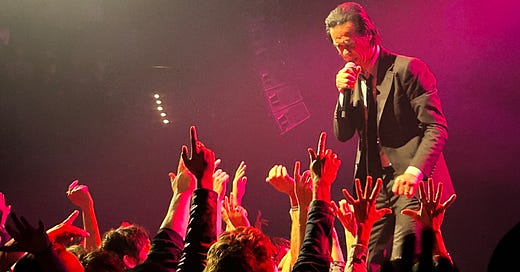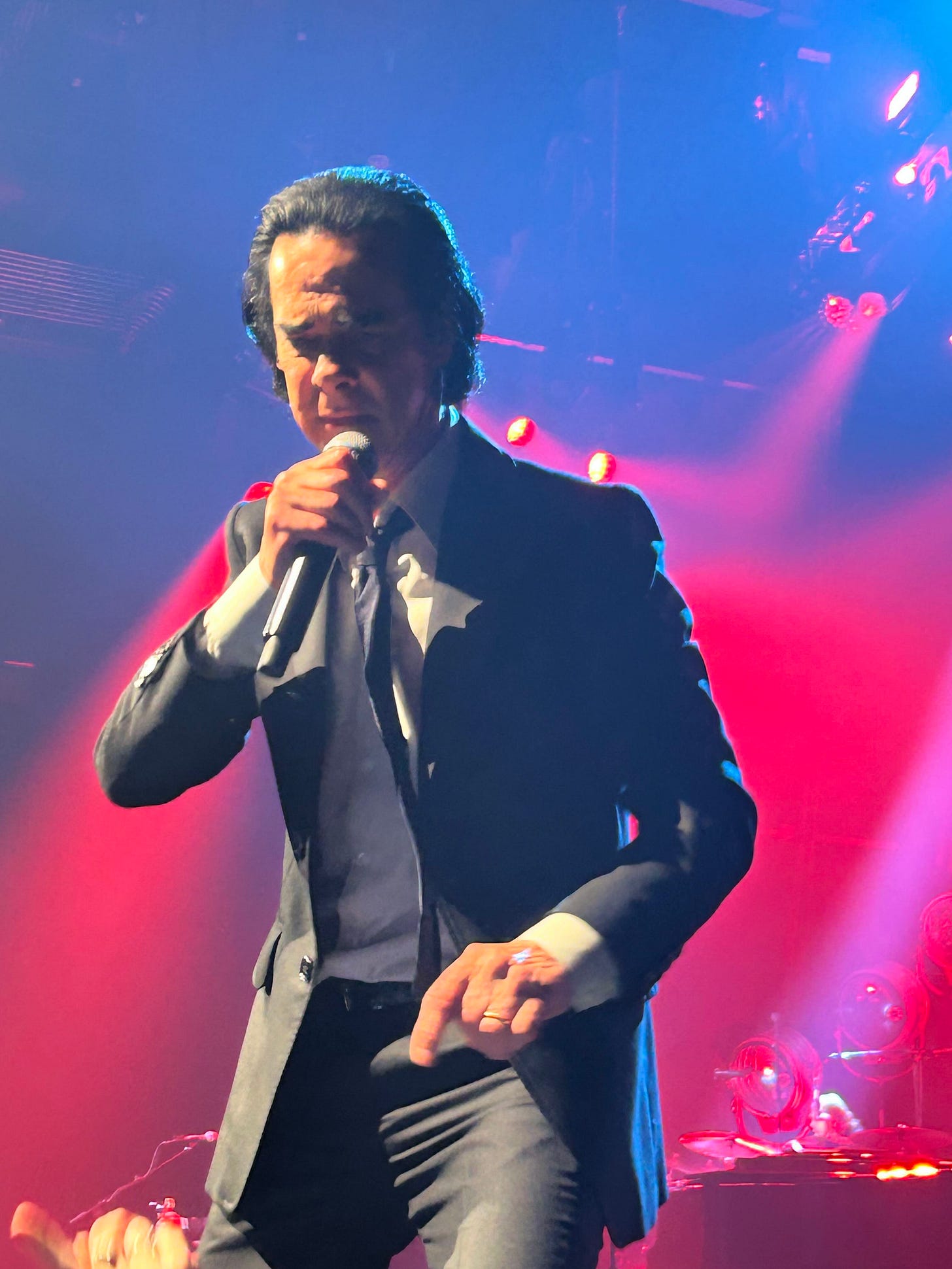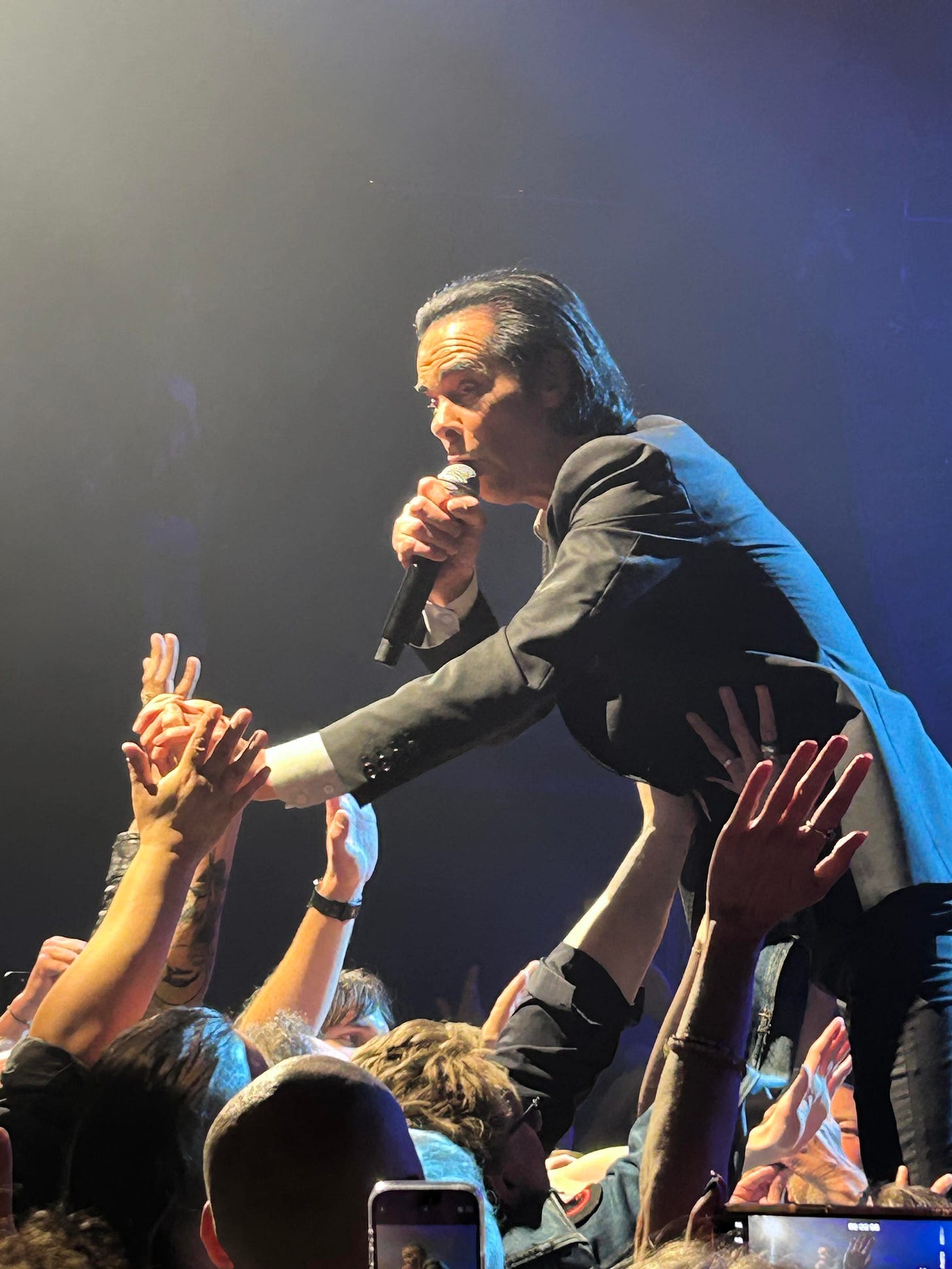The Fortnightly Review in Review: April 2025
The Editor-in-Chief looks back at the cruelest month
We are getting our legs under us here at TFR, finding our words’ “own companionabilities,” as Michael Anania put it in his poem, “Postulate,” with which along with two poems by C. Dale Young we kicked off National Poetry Month. For us every month is National Poetry Month, or rather International Poetry Month, thanks to Piotr Florczyk’s translations of four poems from the Polish by Maciej Robert, in which the specter of Burt Reynolds rubs up against a vision of primordial humanity. Donald Gardner’s review of the Irish poet Desmond Egan’s new collection, Laptop, further demonstrates our unfashionable commitment to the cosmopolitan. Egan, for many years an organizer of the annual Gerard Manley Hopkins International Festival in County Kildare, shares Hopkins’ commitment to the miraculous in the everyday. From his long poem “Memory Village”: “Plop of a fresh egg into /the bubbling saucepan / the tang of soda bread / of such is memory.”
Poems by Amy Glynn, Ernest Hilbert, and Jorge Sánchez rounded out our month of poetry, but April also saw us publish “Blazon,” an intense story about abortion by Christine Hume, a helluva poet who has turned herself into a helluva fiction writer. Our most-viewed installment thus far has been “Making Friends with Failure,” Jeremy T. Wilson’s interview with Vince Francone about his latest publication, A Book No One Wants, in which Francone wrestles engagingly with a bad case of Groucho syndrome (I feel ya, pal) and also gives a shout-out to my second-favorite Irish novelist, Dermot Healy. My favorite April installment might be the remarkable Paris dispatch from Jason Stoneking, who has renounced typing in favor of the “sacred objects” that handwritten notebooks can become. You can read his beautifully handwritten dispatch or listen to it, or do both at once!
On Monday night I headed down to the Salt Shed here in Chicago to see Nick Cave and the Bad Seeds perform the first of two sold-out shows. I’ve been a Nick Cave fan since the mid-90s, though typically for me I was at first more taken with his literary artistry than his music—his first novel And the Ass Saw the Angel was a biting funny Faulkner pastiche that had me blinking in astonishment or hooting with laughter at least once each page. The novel sent me to his albums, particularly the music of what we can now call his middle period, starting with Murder Ballads and The Boatman’s Call up through Dig, Lazarus, Dig!!! and the mesmerizing Push the Sky Away. But it’s the late Nick Cave with whom I fell in love—the man who has been through hell and come back with a message of compassion all the more compelling for being delivered by a guy who looks like an exceptionally well-dressed vampire.
Thanks to the nimble machinations of my friend Chris, we found ourselves at the very front of the stage. The Bad Seeds are looking their age—Warren Ellis looks like Alan Moore with a hangover—but when Nick came out he seemed ageless, impeccable in Armani, in his trademark deconstructed black pompadour. It was a revelatory performance. The crowd felt charged with the grief and disorientation of the past half-decade—one young man near me started sobbing during “Bright Horses” and never stopped—a grief sharpened by the chaos and destruction wrought by mad king Trump over the last hundred days. As you can see from my photos, Nick leaned into the crowd, literally—borne up by clamoring hands. It felt as though he were personally escorting us, Virgil-like, through the halls of grief and rage into the possibilities of joy, renewal, and fellowship. Art can do no more. For one night, it was more than enough.
As the concert went on, Nick shedding bits of his suit and tears standing in my eyes, I thought about how the egoism of the successful artist can, at its best, turn itself inside out and become entirely impersonal. The Nick Cave who strutted and flung himself across that stage was a selfless vessel for the audience to inhabit, a medium for exploring emotions that might elude or overwhelm us if we encountered them alone. I have never been so close, physically, to a bona fide rock star. My temperament is more Apollonian than Dionysian; I am rarely comfortable in a crowd. But if I had been just a few feet closer, mine would have been one of the hands reaching for what Nick Cave, in that moment, represented: the renewed aspiration of the soul in a broken world.
In the spirit of such aspiration, I look forward to the May issue, which kicks off on Saturday with Susan Blumberg-Kason’s engaging interview with writer and editor Robin Hemley about his latest book, How to Change History: A Salvage Project. Italian poet Franca Mancinelli contributes poems translated by John Taylor, and we will also feature poems by Rachel Hadas and John Gallaher. The inimitable Ed Park contributes fiction and Aldon Lynn Nielsen has written a memoir piece about the late Amiri Baraka that I can’t wait to share. More to come!
It’s going to be a great month here at TFR. Tell your friends.







